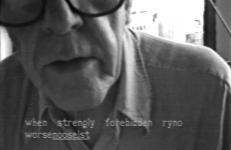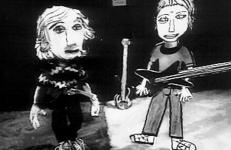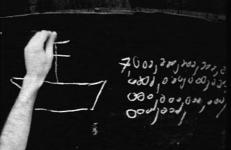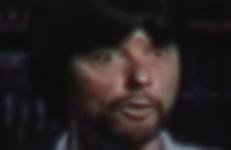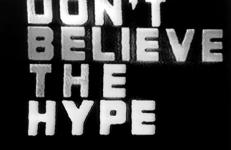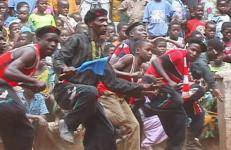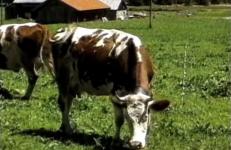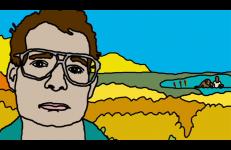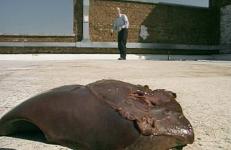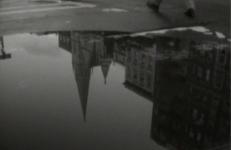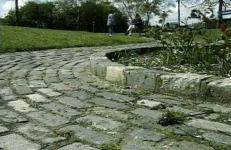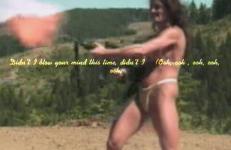When everyone has forgotten the romantic refrains of the Internationale sung in different languages, Pablito, a blue front Amazon parrot, capable of living to 100 years old, will remember. He rings bells and is learning to whistle, hum and sing the Internationale in French, Spanish and German.
Music
"how looking at what has become the skeletons of photographs is a visual lecture on aesthetic pleasure or emotion. and how being, almost entirely denied of this pleasure, or having the pleasure merely suggested induces a viewer to ruminate on the act of viewing and that of wanting to view. and maybe it is evolution which causes this anxiety and art form."
A hallucinatory portrait of a man traveling from Finland to Greece in search of the utopian summit described in René Daumal's Mount Analogue (1952) - a fictional mountain floating in the sea. Equal parts non-fiction cinema, concert film, road movie and spirit quest, our protagonist's journey is accompanied by immersive musical performances from Finnish guitar trio Olimpia Splendid and American percussionist Greg Fox.
Director / Editor / Camera Operator - Ben Russell
Steadicam Operator - Chris Fawcett
Dykes and trans guys take over the Jackhammer for a punk show.
This title is also available on Chicago Sex Change: 2002-2008, A collection of Minax's early videos that together create a punk-documentary tapestry of young queer life in Chicago in the early 2000s.
Jam #1 highlights the colorizing ability of the Sandin Image Processor. This hour-long video compiles a jam session with a piano and drum set, video footage from movies and nature, and visual feedback. The video mixing juxtaposes and alternates the images to create a kaleidoscopic stream of events, accompanied by the improvised music. With keying techniques, bodies and objects become containers that engulf, assimilate, and disintegrate the alternating visual reality. The final part features a “holographic” aesthetic and ambient electronic soundtrack.
An extremely rare documentation of a private performance of John Cage, one of the leading avant-garde composers of the 20th century, who created "Writing for the Fifth Time through Finnegan's Wake" using I-Ching chance operation: Chinese fortune telling. Here Cage performs in front of a video camera operated by Takahiko iimura, while he transforms the text of a modern literature classic by James Joyce into Cagian music in three ways: reading, singing and whispering.
These five short videos introduce Judy, a paper maché puppet who ruminates on her position in society. Like Judy, of the famous Punch and Judy puppet duo, Benning’s Judy seems to experience the world from the outside, letting things happen to her rather than making things happen around her.
This title is also available on Sadie Benning Videoworks: Volume 3.
In his New York City landscape, Cohen finds inspiration in disturbance. Looking to life for rhythm and to architecture for state of mind, he locates simple mysteries. Just Hold Still is comprised of an interconnected series of short works and collaborations that explore the gray area between documentary, narrative, and experimental genres.
An ailing, elderly man listens to a private performance in his room. The singing is a halting mix cross-cultural-Inuktitut and Country & Western. Transgressive and mesmerizing, Karaoke distorts the landscapes of sound and body.
In Inukitut.
This title is also available on Donigan Cumming: Controlled Disturbance and Donigan Cumming Videoworks: Volume 1.
In January 2001, the KEN BURNS’ JAZZ promotional blizzard hit New York City. Billboards, banners on buses, elaborate retail displays in book and record stores, feature coverage in every major print, radio and TV outlet, chatter around the water cooler at the office — total saturation.
Through distorted audio and visual representations of interviews with music journalists, this video critiques the mass media’s treatment of the rap group Public Enemy, and accusations that their lyrics are anti-Semitic. This experimental documentary includes scenes from Public Enemy performances and music videos, as well as archival footage of the Black Power movement and Malcolm X. Know Your Enemy details the war being waged by black artists on the battleground of representation, a struggle against forms of expression which are already co-opted.
Kuyenda N’kubvina looks at how thought and culture propagate in the slender nation of Malawi. Weaving our way through video halls, book stores, dance floors and radio stations, in cities and small villages, we meet Malawians who traffic in ideas, reflecting the rhythms of Malawian contemporary life. The video was instigated by the filmmaker’s relative ignorance about the people and culture of southeast Africa, and accompanies her as she seeks out individuals and infrastructures that channel and articulate Malawian identity.
A man learns his daughter has been brutally murdered by her husband. Time stands still as he oscillates between the need for solace and his urge for revenge. La Bouche is an experimental musical featuring Guinean percussion master Mohamed Bangoura (“Red Devil”), loosely based on his own story.
Caught by video on a mountainside, Swiss cows compose and orchestrate a bell sonata.
This title is also available on Sympathetic Vibrations: The Videoworks of Paul Kos.
Some forms we can only know by their shadow. In homage to the spirits of space test dogs, or any being we use in the name of progress.
This video was made by invitation of composer Olivia Block for the release of her album Innocent Passage in the Territorial Sea (Room40).
Composer: Olivia Block
Additional Imagery: NASA, Jeremy Inglis, Suan Hsi Yong
A series of unnatural deaths and departures (almost all, of men) disrupts the lives of nine families sharing an apartment building in Jerusalem.
Ponies discover an equine Shangri-La. The audience is introduced to a classic dance step. Chubby Checker provides the musical accompaniment.
This title is also available on Ben Coonley: Post Pony Trilogy.
A Videofreex performance. Bart Friedman plays the pump organ and David Cort sings. He asks Bart to "Play something that I can laugh to," and much laughter ensues. Then, "because of American society," there is a sad song, and much wailing ensues.
Lesser Apes tells the story of a love affair between a primatologist, Farrah, and a female bonobo ape, Meema. Bonobos are the species with which humans share the most DNA, but unlike our species, they are matriarchal, live without conflict, and are unabashedly sexual. A paean to perversion, the film combines animation, live action and song to challenge attitudes about sex, language and our relationship to nature.
Lesser Apes tells the story of a love affair between a primatologist, Farrah, and a female bonobo ape, Meema. Bonobos are the species with which humans share the most DNA, but unlike our species, they are matriarchal, live without conflict, and are unabashedly sexual. A paean to perversion, the film combines animation, live action and song to challenge attitudes about sex, language and our relationship to nature.
In this surreal experimental narrative, there’s something wrong with a patch of sky. As it travels over Southern England, objects cast up into it come down hugely enlarged, bloated. Meanwhile in London, the patch is in fact a troubling scab on a crippled old man’s head. As the scab develops, all he can do is wait, going through the changes, led on gently by the idiot-savant son with his childlike multiple identities.
Long for the City is a short portrait of Patti Smith in the city where she lives. Patti recites the very first poem-song she ever wrote, and then a later one, "Prayer", from the early 1970s. We take a walk in her changing neighborhood, and I ask her what she saw. Footage was shot in the moment, as well as drawn from the archive I've gathered over many years. Long for the City can be considered a non-musical companion piece to the music short, Spirit, which we collaborated on in 2007.
Lost Sound documents fragments of discarded audio tape found by the artists within a small area of East London, combining the sound retrieved from each piece of tape with images of the place where it was found. The work explores the potential of chance, creating portraits of particular places by building formal, narrative, and musical connections between images and sounds, linked by the random discoveries of the tape samples.
Lost Sound documents fragments of discarded audio tape found by the artists within a small area of East London, combining the sound retrieved from each piece of tape with images of the place where it was found. The work explores the potential of chance, creating portraits of particular places by building formal, narrative, and musical connections between images and sounds, linked by the random discoveries of the tape samples.
Love Songs #1 is composed of three pieces that pose questions about urban culture, race, and politics. Found footage images are manipulated and juxtaposed with popular music; the effects are unsettling, ironic, and sometimes humorous.









